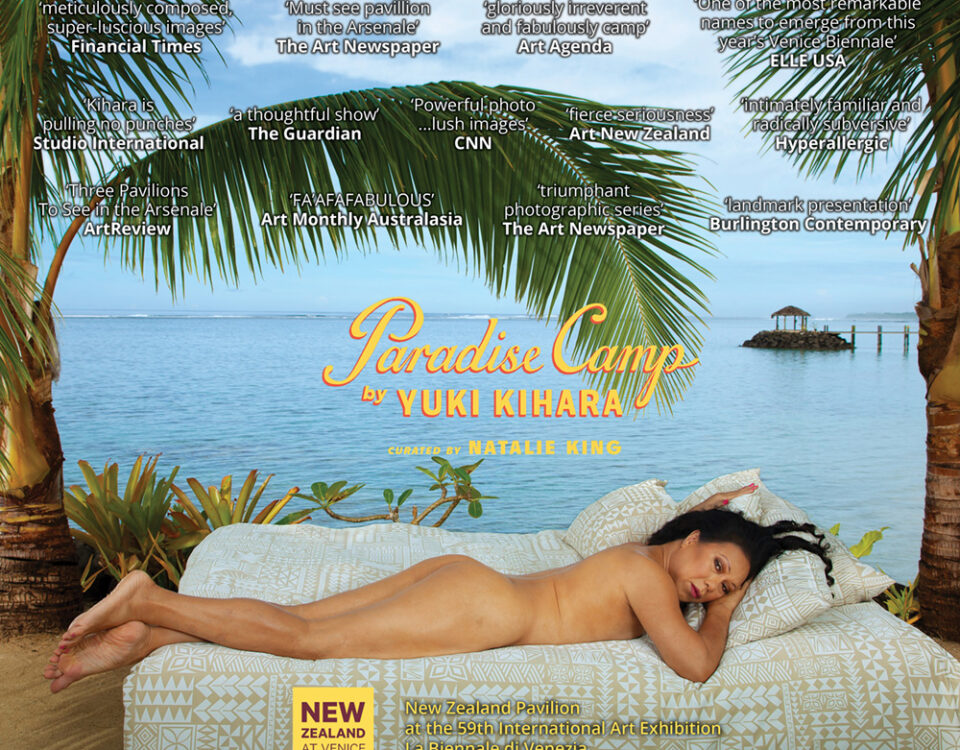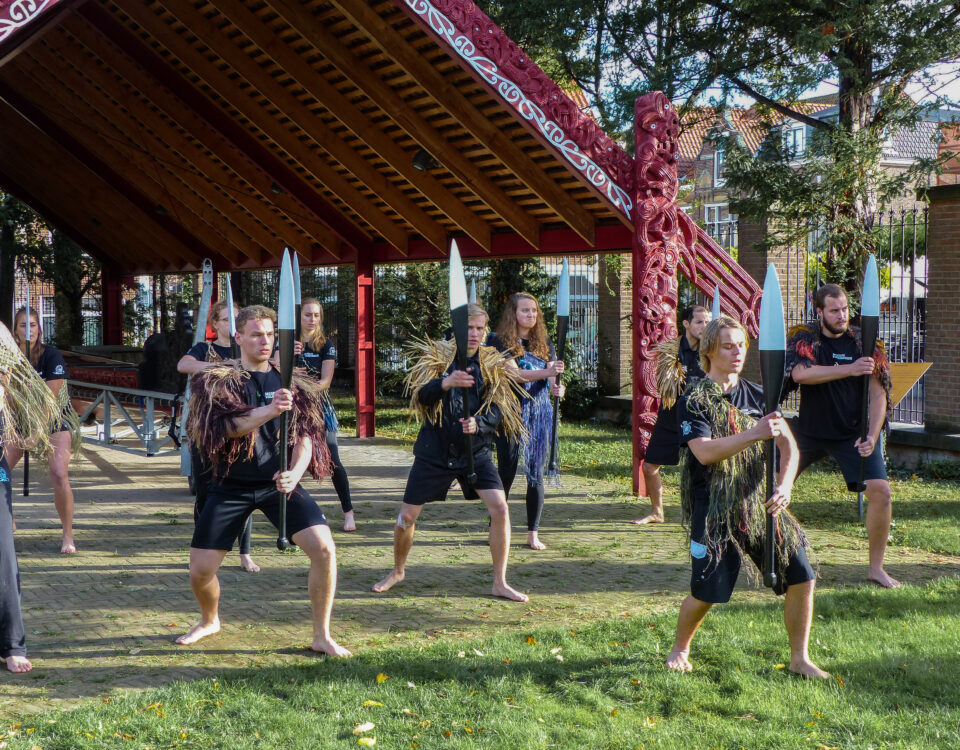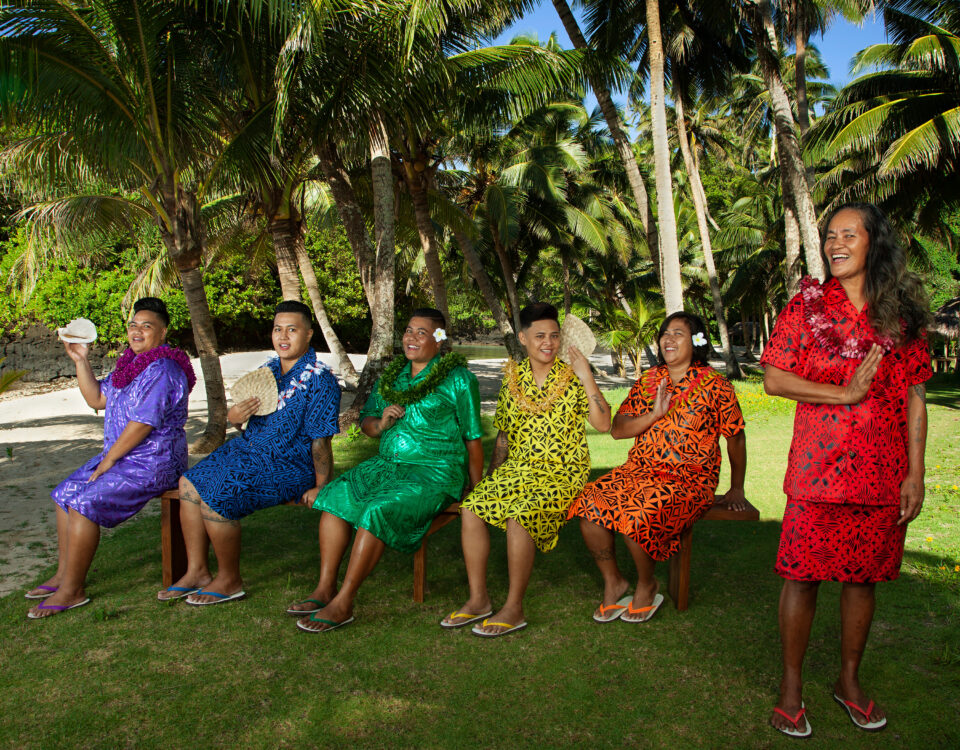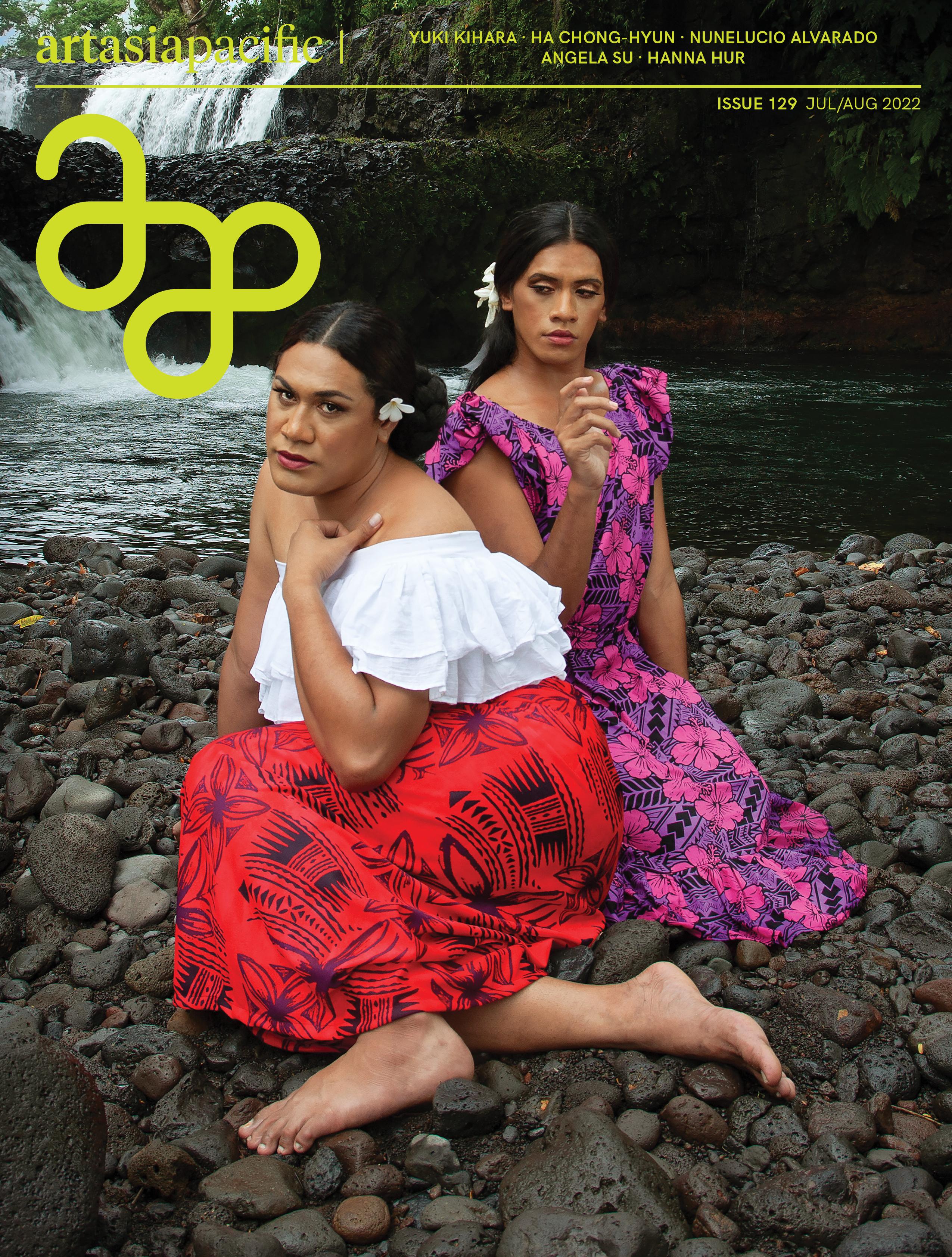
Art Asia Pacific: Yuki Kihara: Trouble in Paradise
July 6, 2022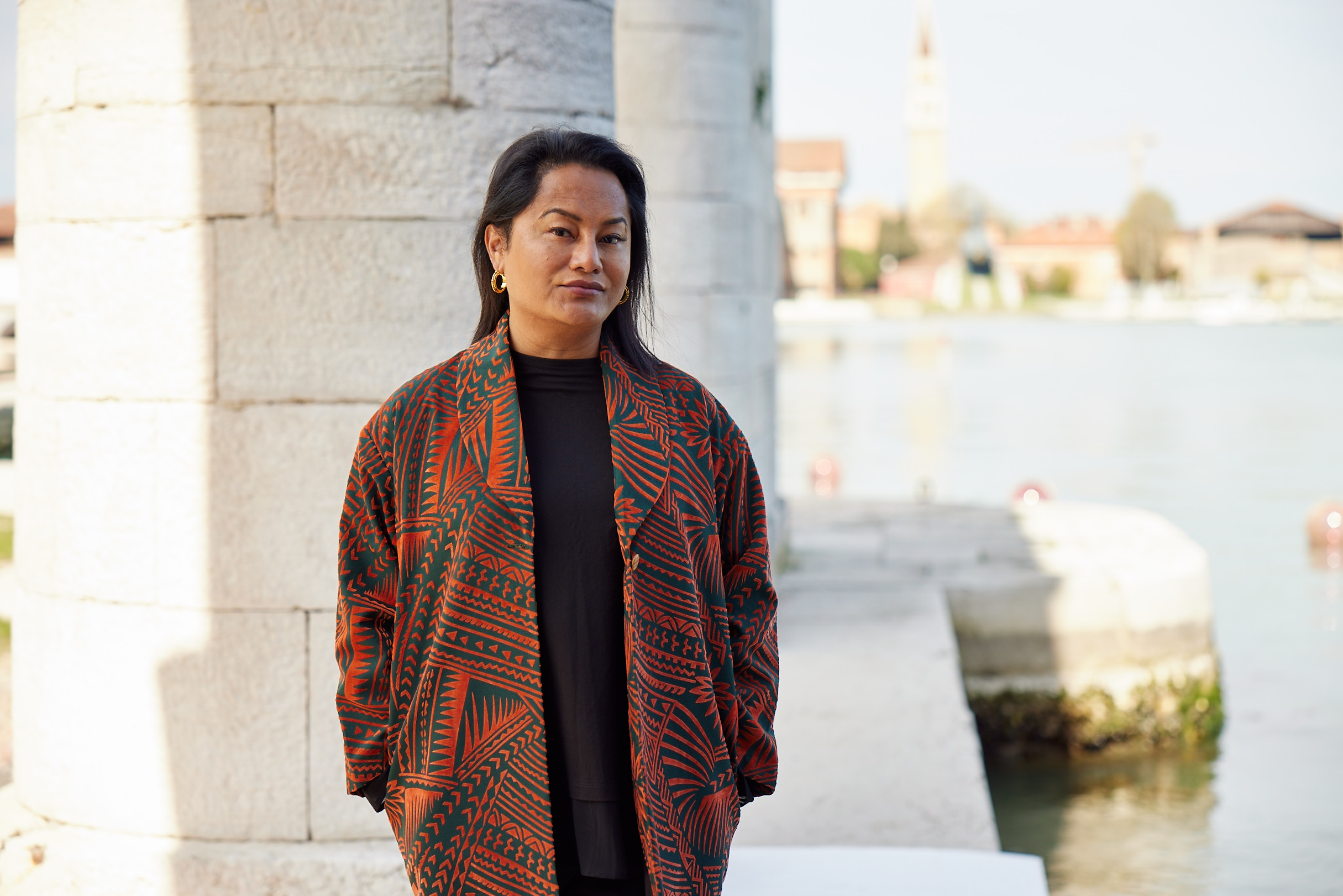
Studio International: Yuki Kihara on Paradise Camp
July 20, 2022Arts News New Zealand: Yuki Kihara: Fa‘afafine Nation by Ioana Gordon-Smith
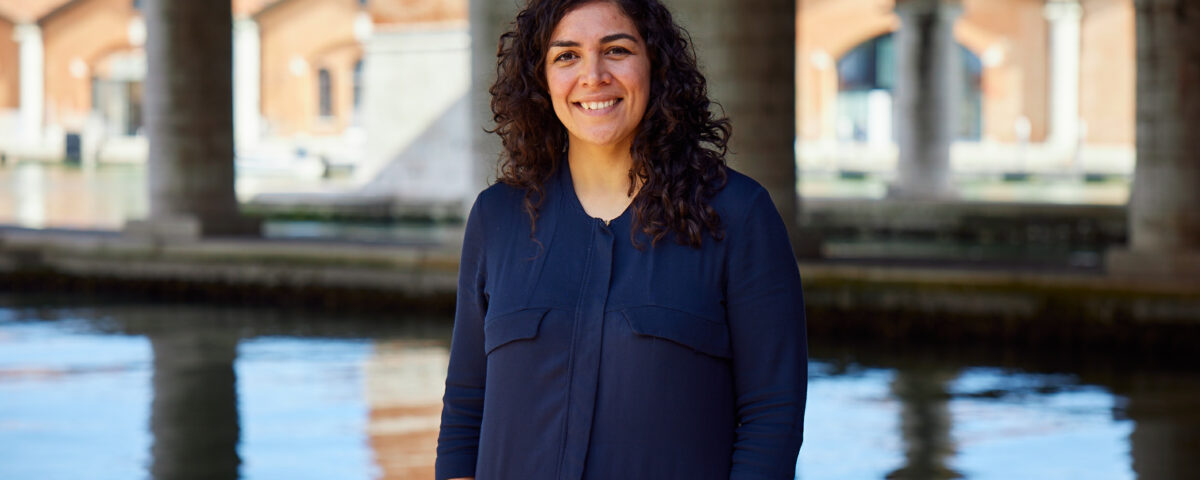
The Venice Biennale is irrevocably entangled with questions of representation. Every two years, some eighty nations select an artist or artists to represent them at the world’s largest international art event. For this year’s Biennale, Creative New Zealand sent Yuki Kihara, with curator Natalie King and myself as assistant curator.
Much has been made of the fact that Kihara is the first Pasifika, first Asian, and first fa‘afafine (Sāmoan third gender) artist to represent Aotearoa New Zealand at Venice, but, as her presentation Paradise Camp suggests, the Pacific is no stranger to internationalism. The Western gaze has looked towards the Pacific and Pacific bodies for centuries. At the heart of Paradise Camp is an interrogation and camp reinvention of ‘paradise’. Western art history has continuously depicted the Pacific as an idyllic and untouched paradise, a mecca of anonymous, sexually available women. While the tropes of paradise affect all Pacific peoples and environments, Kihara makes the intersectional argument that ‘paradise’ is a heteronormative concept, affecting fa‘afafine unevenly. What would paradise look like if fa‘afafine were in charge of the imagining? Kihara, a self-described ‘triple threat to the white middle class’, centres that fa‘afafine perspective. Paradise Camp comprises three sections. The Vārchive is a salon hang of items that include newspaper clippings, personal photographs, archival images, a model of a Sāmoan volcano, a photographic ‘fa‘afafine aquarium’ of hermaphrodite fish, and a Sāmoan Fa‘afafine Association trophy, all set against a vast siapo-patterned wallpaper. ‘Vārchive’ is a portmanteau of the Western ‘archive’ and the Sāmoan ‘vā’, a concept that describes an active ‘in-between’ space of relationality connecting otherwise discrete entities. The vā guided Kihara’s distinctively genre-crossing selection of material.
Pick up your copy of Arts News New Zealand for the full eight page spread.

